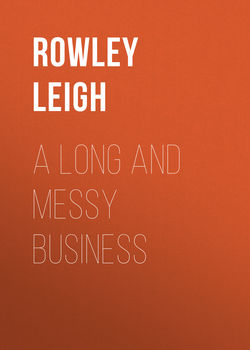Читать книгу A Long and Messy Business - Rowley Leigh - Страница 60
На сайте Литреса книга снята с продажи.
ОглавлениеMay Sound Pedestrian
Risi e Luganeghe
‘Risotto’ used to be a standard part of our diet when I was
growing up. It was a portmanteau dish which involved
frying up a few leftovers, perhaps opening a can or two
and then adding some rice, which had usually been cooked
beforehand. It was somewhat stodgy but perfectly
acceptable, better than the dreaded ‘rissoles’ – don’t ask
– but not a patch on toad-in-the-hole.
A few smart London trattorias in the 1960s put us right
about risotto, but it was at least another decade before
most of us became aware of what a proper one should
consist of. It was all about the rice. The other ingredients
were just flavouring. Moreover, the rice had to be lovingly
turned in butter and onions and then stirred constantly
while hot stock was slowly added so that the starch from
the rice formed a soupy emulsion with the stock.
Now we knew. It did not stop us from overcooking the
rice, overcomplicating the dish or whacking in some pretty
unpleasant flavours, but at least we knew the rules. The
problem with rules when it comes to Italian cooking, not
to put too fine a point on it, is Italians. I do not mean this
disparagingly, nor do I suggest that Italian cooks do not
follow rules: quite the contrary. It is just that the rules are
more varied and complicated than those of Rugby Union,
Stableford golf and Mornington Crescent (the silly game
played on BBC Radio 4) put together.
In Piedmont, they make risotto but also boil their
risotto rice and dress it with butter, lemon juice and
basil (this preparation is my favourite filling for stuffed
tomatoes). In the Veneto, they cook their risotto in a
bewildering number of ways, sometimes coming up with
risi e bisati, a substantial dish of eels and rice flavoured
with parsley and garlic, sometimes with risi e bisi, a soupy
mix of rice and the first very tender peas of the season.
Whereas both these dishes can be called risotto, risi e
luganeghe, also from the Veneto, could not. It is, in truth,
more like paella, since the few ingredients are cooked first,
stock added and then the rice is simply sprinkled in and
left to cook. Italian rice, whether Arborio, Vialone Nano,
Carnaroli (which I use here), or something even more
obscure, is more delicate than Spanish varieties and the
texture is different, so cooking times must be faithfully
observed. Sausage and rice may sound pedestrian, but the
result is remarkably light and extremely palatable.
89
March
